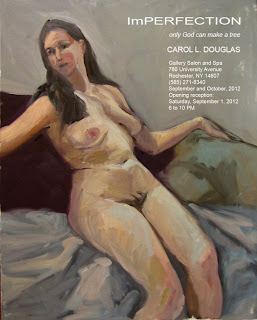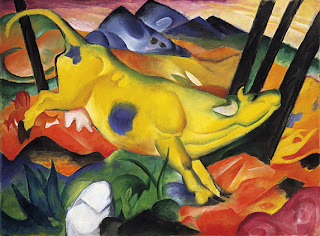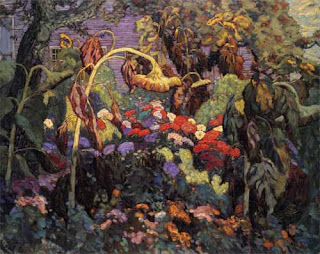 |
| “Loren’s farm,” oil on canvasboard, 12X16 |
At our last painting session, Marilyn whipped out her grayscale markers (making me instantly regret that I hadn’t brought mine along). The forest was remarkably dark and moody this week, and the spring foliage far less advanced than down on the lake plains, and I was finding it difficult to find a range of values.
 |
| Marilyn Fairman sketching in grayscale markers. |
A tonal drawing immediately reveals the strengths and weaknesses of one’s composition—if it doesn’t work in the simplified view, it isn’t going to work after you’ve invested hours painting, either. In fact, the painting I did in that last session ended up mired in a compositional issue that would have been immediately apparent had I done some fundamental drawing before starting, but I was tired and cutting corners.
 |
| “Canoes at Irondequoit Inn,” oil sketch |
To me, the difference between an adequate painter and an excellent painter is the amount of time said artist spends drawing. I wrote earlier this week about watercolor sketching, and have written frequently about drawing with a plain, ordinary graphite pencil.
 |
| “Breakwater at Irondequoit Bay,” oil sketch |
In the field, however, I most often sketch with oils on small canvases. Here is a sketch I did of the canoes at the Irondequoit Inn, and another of the breakwater at Irondequoit Bay.* They took about as long as a graphite or watercolor sketch would have, but their purpose is somewhat different: they are simplified and monumental in the same way as the tonal grayscale marker (which is by far the fastest way of sketching).
 |
| And the painters home from the hill… |
I did three other paintings in the Adirondacks. One was a complete bomb (despite having spent a long time drawing and an equally long time painting). I followed that up by inadvertently discharging the battery of my car outside of cell-phone range, leaving me stranded with a dead car with its keys stuck in the ignition. Marilyn set off on foot to get help while I dug out the battery—not as obvious as you might think, since it’s stowed in the side of the trunk. But a bad painting and a dead battery did nothing to dampen my high good spirits.
I’m struggling with something, which is by no means uncomfortable when you’re not fixated on the results. I have been working for the past few years on patterning my paint-handling in a more abstract way, but in the process I’ve lost some of the depth that a more traditional landscape approach gives. Now that has to be reintroduced.
 |
| “Mountain meadow,” oil on canvasboard, 12X16 |
But my hermitage (which became less hermit-like as the week went on) is over and I’m happy to be back in Rochester, in my studio, surrounded by my family, friends, and students.
*An alert reader will note that the Irondequoit Inn and Irondequoit Bay are about 200 miles apart. I leave that mystery to you to decipher.










